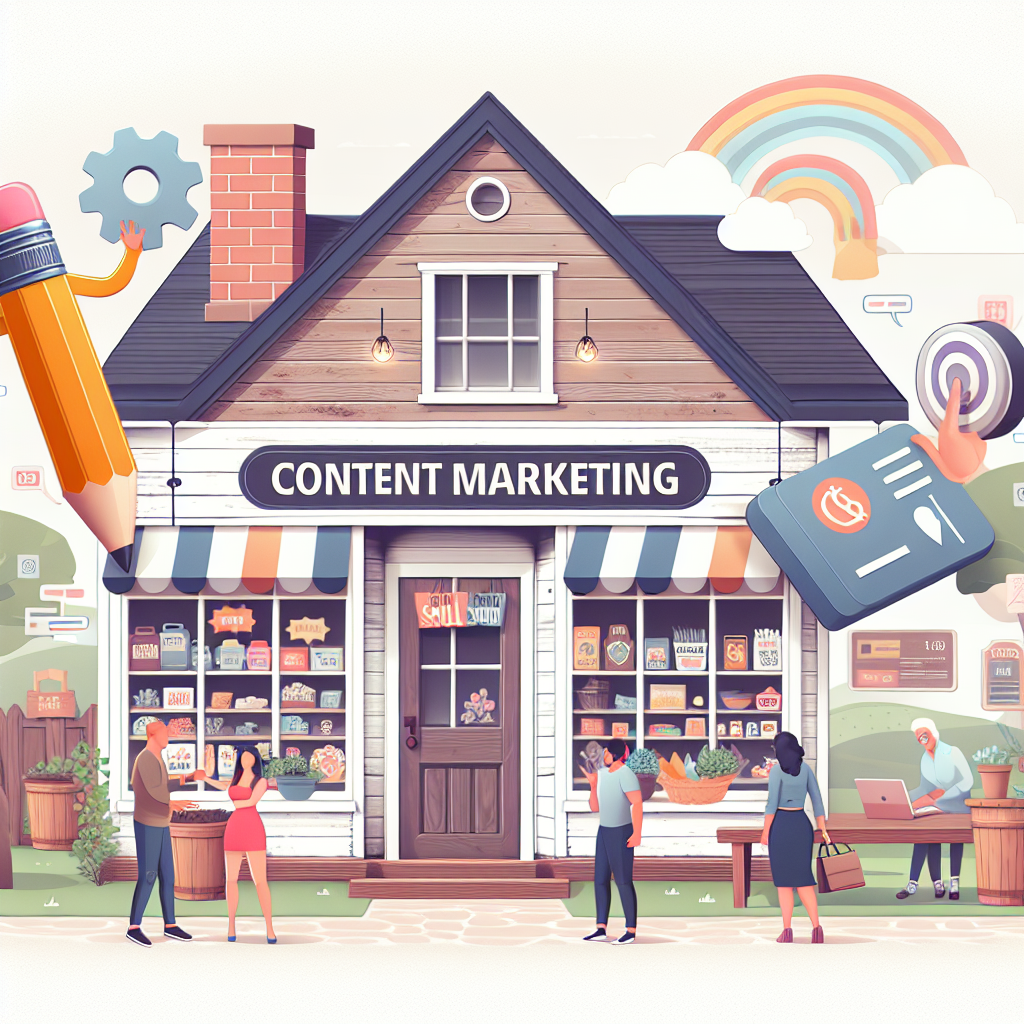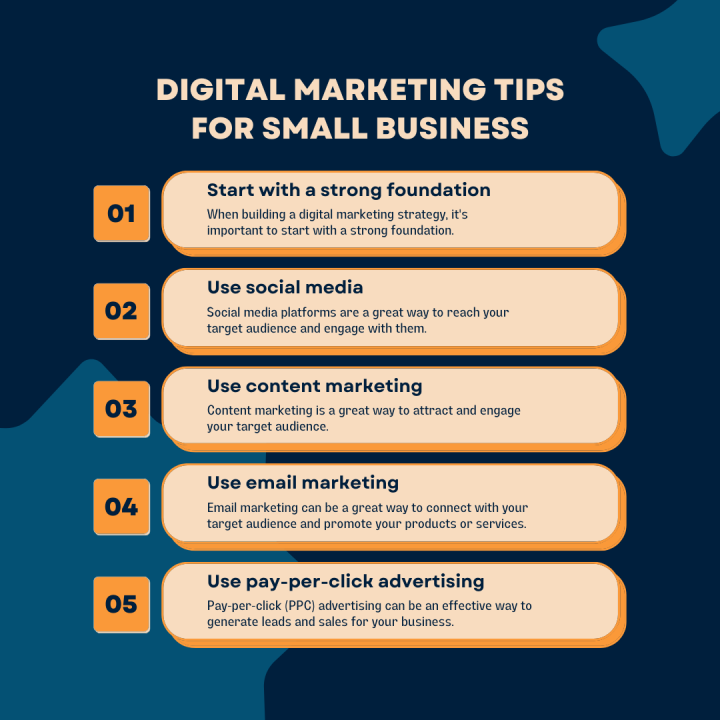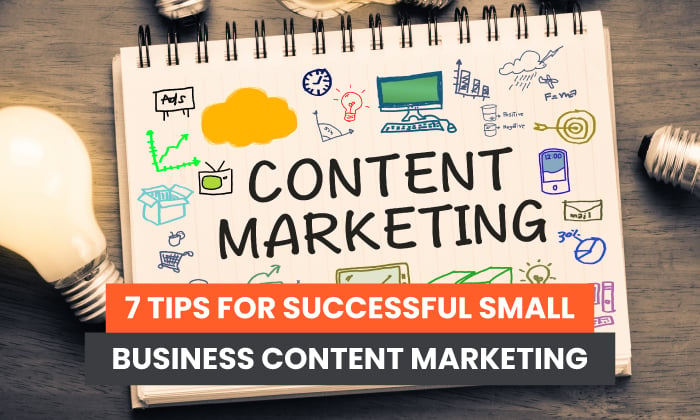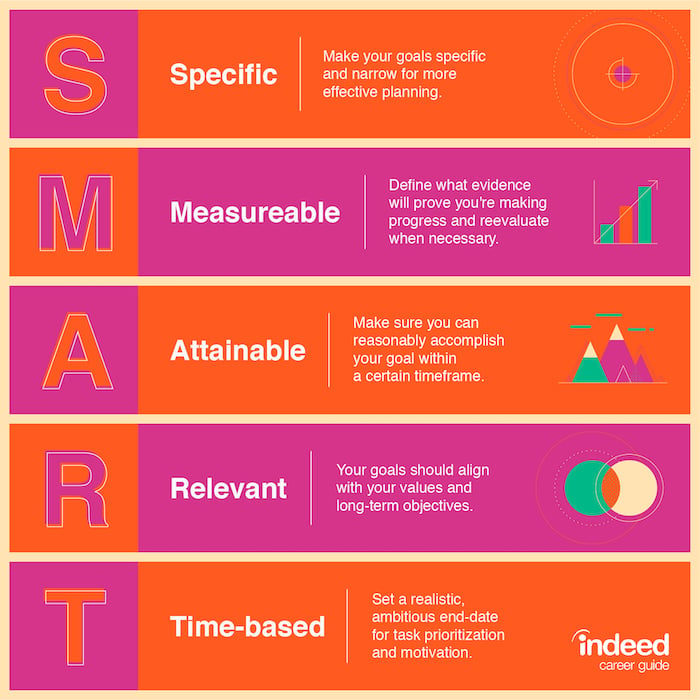Uncover the secrets to success in content marketing for small businesses with these 10 game-changing tips and strategies.

Image courtesy of via DALL-E 3
Table of Contents
Introduction to Content Marketing
Welcome to the world of content marketing! In this section, we’ll explore what content marketing is all about and why it’s essential for small businesses like yours. So, let’s dive in and discover how content marketing can help your business grow and succeed.
What is Content Marketing?
Content marketing is a way for businesses to create and share valuable information with their target audience. This content can come in many forms, such as blog posts, videos, social media posts, and more. The goal of content marketing is not to directly sell a product or service but to build a relationship with customers by providing useful and engaging content.
Why Small Businesses Should Care
As a small business owner, content marketing can be a game-changer for you. It allows you to reach a larger audience, establish your brand as an authority in your industry, and build trust with potential customers. By consistently sharing valuable content, you can attract new customers, retain existing ones, and ultimately grow your business.
Planning Your Content Marketing Strategy
Before diving into content marketing, it’s important to set clear and achievable goals. These goals will guide your content creation and help you measure your success. Whether your goal is to increase website traffic, generate leads, or build brand awareness, having a roadmap will keep you focused and on track.
Knowing Your Audience
Understanding your audience is key to creating content that resonates with them. Take the time to define who your target audience is, what their needs and interests are, and where they spend their time online. This insight will help you tailor your content to meet their needs and engage with them effectively.
Choosing the Right Platforms
Not all social media platforms or websites are created equal. It’s important to choose the right platforms where your target audience is most active. Whether it’s Facebook, Instagram, LinkedIn, or a niche forum, being strategic about where you publish your content will ensure maximum reach and engagement.
Creating Engaging Content
Creating interesting content is essential for capturing the attention of your audience. There are various types of content you can use, such as blogs, videos, infographics, and more. Blogs allow you to share valuable information and insights with your audience, while videos can be engaging and visually appealing. Infographics are great for presenting data in a visually appealing way that is easy to understand.

Image courtesy of www.linkedin.com via Google Images
Storytelling
One of the most effective ways to make your content special is through storytelling. Stories have the power to evoke emotions and connect with your audience on a deeper level. By sharing personal anecdotes or crafting a narrative around your brand, you can make your content more relatable and memorable.
Using Images and Videos
Images and videos play a crucial role in making your content more attractive and engaging. Visual elements not only make your content visually appealing but also help break up text and keep your audience interested. Be sure to include high-quality images and videos that are relevant to your content to enhance the overall experience for your audience.
Sharing and Promoting Your Content
Once you have created engaging content for your small business, the next step is to make sure it reaches a wider audience. This involves sharing and promoting your content through various channels to increase visibility and engagement. Here are some key strategies to help you get your content in front of more people:
Social Media
Social media platforms like Facebook, Instagram, Twitter, and LinkedIn are great tools for sharing your content with a larger audience. By posting regularly and engaging with your followers, you can increase brand awareness and drive traffic to your website. Make sure to use relevant hashtags and visually appealing images to attract more attention to your posts.
Email Marketing
Another effective way to share your content is through email marketing. By sending out newsletters or promotional emails to your subscribers, you can keep them informed about your latest updates and offerings. Personalize your emails and include call-to-action buttons to encourage recipients to visit your website and engage with your content.
Collaborating with Others
Collaborating with other businesses, influencers, or content creators can help you expand your reach and tap into new audiences. Consider guest posting on popular blogs, participating in joint promotional campaigns, or hosting webinars with industry experts. By partnering with like-minded individuals or brands, you can leverage their networks and credibility to promote your content effectively.
Engaging with Your Audience
When people leave comments on your content, it’s essential to respond to them. By engaging with your audience in this way, you show that you value their input and opinions. Whether they are asking a question, sharing their thoughts, or giving you feedback, taking the time to reply can help build a connection with your audience.

Image courtesy of neilpatel.com via Google Images
Encouraging Feedback
Feedback is crucial for improving your content and understanding what resonates with your audience. Encourage your viewers or readers to share their opinions, even if they are critical. Positive feedback can motivate you, while negative feedback can provide valuable insights for growth. Embrace all kinds of feedback as opportunities to learn and evolve.
Measuring Your Success
Knowing whether your content marketing efforts are paying off is crucial for any small business. In this section, we will explore how you can track your progress and understand what is resonating with your audience.
Using Analytics Tools
Analytics tools are like secret agents that gather all the important data about your content. One of the most popular tools is Google Analytics. It can show you how many people are visiting your website, which pages they are viewing the most, and even how long they are staying. By using these tools, you can see what is working well and what may need some improvement.
Seeing What Works
After gathering data from analytics tools, the next step is figuring out what content is hitting the mark. Look for patterns in the data. Are certain types of posts getting more likes or shares? Do videos perform better than written articles? By analyzing these trends, you can tailor your content strategy to give your audience more of what they love.
Improving Your Content Over Time
One way to enhance your content marketing strategy is by updating older posts or articles. By refreshing the information and adding new insights, you can attract more readers and improve your search engine ranking. It’s like giving your content a fresh coat of paint to keep it relevant and engaging.

Image courtesy of neilpatel.com via Google Images
Learning from Mistakes
Everyone makes mistakes, even in content marketing. The key is to learn from those mistakes and use them as opportunities to grow. Whether it’s a poorly received blog post or a failed social media campaign, take the time to analyze what went wrong and how you can avoid repeating the same errors in the future. Embracing failure as a learning experience will help you continuously improve your content over time.
Common Mistakes to Avoid
One of the biggest mistakes small businesses can make when it comes to content marketing is jumping in without a plan. Without a clear strategy in place, you might end up wasting time and resources on content that doesn’t align with your goals. It’s essential to take the time to set specific, achievable goals for your content marketing efforts. This will help guide your content creation and ensure that you are working towards something meaningful.
Ignoring Your Audience
Another common mistake is not paying attention to your audience’s needs and preferences. Your content should always be geared towards providing value to your target audience. By understanding who your audience is and what they are interested in, you can create content that resonates with them and builds a stronger connection. Remember to listen to feedback, engage with your audience, and adjust your content strategy based on their preferences.
Conclusion
In conclusion, content marketing is a powerful tool for small businesses to connect with their audience and grow their brand. By creating valuable and engaging content, businesses can reach more people, build trust, and ultimately drive success. It’s essential for small businesses to carefully plan their content marketing strategy, create engaging and relevant content, share it effectively, engage with their audience, measure their success, and continuously improve over time. Avoiding common mistakes like not having a plan and ignoring your audience can also lead to better outcomes.

Image courtesy of in.pinterest.com via Google Images
Remember, content marketing is a journey that requires dedication, creativity, and consistency. By following the tips outlined in this guide, small businesses can effectively harness the power of content marketing to achieve their goals and stand out in a competitive market. Embrace the opportunity to tell your unique story, engage with your audience, and measure your success to continually refine your approach. With commitment and perseverance, success in content marketing is within reach for small businesses of all sizes.
Want to turn these SEO insights into real results? Seorocket is an all-in-one AI SEO solution that uses the power of AI to analyze your competition and craft high-ranking content.
Seorocket offers a suite of powerful tools, including a Keyword Researcher to find the most profitable keywords, an AI Writer to generate unique and Google-friendly content, and an Automatic Publisher to schedule and publish your content directly to your website. Plus, you’ll get real-time performance tracking so you can see exactly what’s working and make adjustments as needed.
Stop just reading about SEO – take action with Seorocket and skyrocket your search rankings today. Sign up for a free trial and see the difference Seorocket can make for your website!
Frequently Asked Questions (FAQs)
What is Content Marketing?
Content marketing is a strategy that involves creating and sharing valuable, relevant content to attract and engage a target audience. This content can come in various forms such as blog posts, videos, social media posts, and more.
Why Small Businesses Should Care
Small businesses should care about content marketing because it can help them reach a wider audience, build credibility and trust with their customers, and ultimately drive more traffic and sales to their website or store.
Setting Goals
Setting clear and achievable goals is important in content marketing because it helps you stay focused, track your progress, and determine the success of your efforts. Whether it’s increasing website traffic, generating leads, or growing your social media following, having specific goals will guide your strategy.
Knowing Your Audience
Understanding who your target audience is crucial in content marketing because it allows you to create content that resonates with them. By knowing their interests, preferences, and pain points, you can tailor your content to meet their needs and keep them engaged.
Choosing the Right Platforms
Selecting the appropriate social media platforms or websites to share your content on is essential to reaching your target audience. Different platforms attract different demographics, so it’s important to research where your audience spends their time and tailor your content accordingly.
Types of Content
There are various types of content you can create to engage your audience, including blogs, videos, infographics, podcasts, and social media posts. Experimenting with different formats can help you discover what resonates best with your audience.
Storytelling
Telling a story through your content can make it more compelling and memorable for your audience. By incorporating narratives, anecdotes, and personal experiences, you can create a connection with your readers and keep them coming back for more.
Using Images and Videos
Incorporating images and videos into your content can make it more visually appealing and engaging for your audience. Visual content is often more shareable and attention-grabbing, helping you stand out in a crowded digital landscape.
Social Media
Sharing your content on social media platforms like Facebook, Instagram, Twitter, and LinkedIn can help you reach a larger audience and drive more traffic to your website. By posting regularly and engaging with your followers, you can build a loyal community around your brand.
Email Marketing
Utilizing email marketing to share your content with subscribers can be an effective way to keep them informed and engaged. Sending out newsletters, updates, and promotions can drive traffic to your website and encourage repeat visits.
Collaborating with Others
Collaborating with other businesses, influencers, or content creators can help you expand your reach and tap into new audiences. By partnering with like-minded individuals, you can cross-promote each other’s content and leverage shared expertise.
Responding to Comments
Engaging with your audience by responding to comments and feedback shows that you value their input and care about their opinions. It can help foster a sense of community around your brand and build trust with your customers.
Encouraging Feedback
Welcoming both positive and negative feedback from your audience can provide valuable insights into what is working well and what can be improved in your content. Constructive criticism can help you refine your approach and better meet the needs of your audience.
Using Analytics Tools
Utilizing tools like Google Analytics can help you track the performance of your content and understand how your audience is interacting with it. By analyzing key metrics such as website traffic, engagement rates, and conversion rates, you can make data-driven decisions to optimize your content strategy.
Seeing What Works
Determining which type of content resonates best with your audience can help you refine your strategy and focus on creating content that drives results. By testing different formats, topics, and publishing times, you can identify patterns of success and replicate them in future campaigns.
Updating Old Content
Refreshing older posts by updating information, adding new insights, or improving visuals can breathe new life into your content and attract fresh traffic. By regularly revisiting and optimizing your existing content, you can improve its relevance and SEO ranking over time.
Learning from Mistakes
Embracing failures and using them as learning opportunities can help you grow and evolve as a content marketer. By analyzing what went wrong, adjusting your approach, and applying those lessons to future campaigns, you can continuously improve and adapt to the changing digital landscape.
Not Having a Plan
Jumping into content marketing without a clear strategy or roadmap can lead to scattered efforts and ineffective results. Developing a plan that outlines your goals, target audience, content types, and promotion tactics is essential for staying focused and measuring your success.
Ignoring Your Audience
Disregarding the needs, preferences, and feedback of your audience can alienate them and lead to disengagement with your brand. By actively listening to your audience, responding to their comments, and adapting your content based on their input, you can foster a strong relationship and loyalty with your customers.







